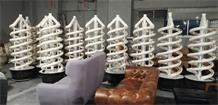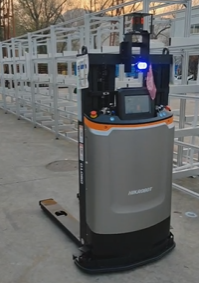

聯系電(diàn)話(huà)(微(wēi)信同步)
+86 187 4315 9877
+86 0431 83529333
聯系QQ
36173712
源食種植
Source foods cultivation
聯系我們 CONTACT US

地(dì) 址:吉林(lín)省農(nóng)安縣伏龍泉鎮大地(dì)家(jiā)園B棟
電(diàn) 話(huà):0431-83529333 18743159877
傳 真:0431-83529333
Q Q :36173712
郵 箱:info@sfgrow.com
熱線電(diàn)話(huà)
83529333

To further enhance productivity and precision, the integration of robots and smart systems is becoming increasingly prevalent.
1. Automated Planting and Transplanting:
Robots equipped with advanced vision systems can precisely plant seeds or transplant seedlings into the hydroponic system. They can accurately space the plants and ensure uniformity, leading to optimal growth conditions.
2. Autonomous Monitoring:
Smart sensor systems, including temperature, humidity, and nutrient sensors, continuously collect data and transmit it to a central control system. This data allows growers to make real-time adjustments, ensuring the ideal environment for plant growth.
3. Nutrient Management:
Smart systems can precisely control the nutrient solution's composition and distribution. They monitor the pH and electrical conductivity (EC) levels, ensuring that plants receive the right balance of essential nutrients. This fine-tuning promotes healthier growth and reduces nutrient wastage.
4. Robotic Harvesting:
Robots are being developed to harvest ripe vegetables with precision. They can identify when a fruit or vegetable is ready for harvest, minimizing waste and labor costs.
5. Weeding and Pest Control:
Robots equipped with cameras and AI can detect and remove weeds without the need for herbicides. Similarly, autonomous drones and robots can target and eliminate pests, reducing the need for chemical pesticides.
6. Controlled Environment:
Smart systems can regulate temperature, humidity, and lighting conditions. They can adjust these factors based on plant needs, energy efficiency, and real-time weather data to create an optimal growing environment.
7. Data-Driven Decisions:
Machine learning and AI technologies analyze vast amounts of data to predict crop growth, detect diseases, and optimize resource usage. This data-driven approach empowers growers to make informed decisions and improve overall crop quality and yield.
8. Remote Monitoring and Control:
With the use of smartphones and tablets, growers can remotely monitor and control the greenhouse environment. They can receive alerts and make adjustments even when they are off-site.
9. Resource Efficiency:
By integrating robots and smart systems, hydroponic greenhouses can reduce resource consumption. This includes water usage, energy consumption, and the need for pesticides and herbicides. As a result, the system becomes more sustainable and eco-friendly.
10. Labor Savings:
Automation significantly reduces the need for manual labor, especially for repetitive tasks. This not only reduces labor costs but also addresses labor shortages, a common challenge in agriculture.
11. Scalability:
The use of robotics and smart systems allows for easy scalability. Growers can expand their operations without a proportionate increase in labor requirements.